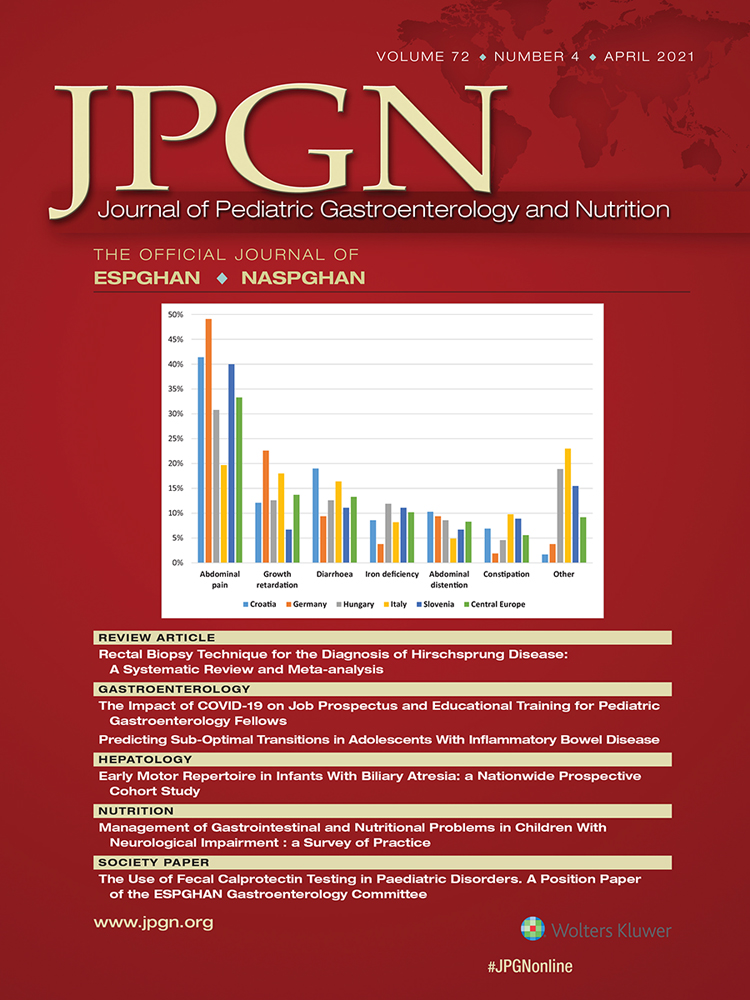A Trial of an Anamnesis-based Score Applied as a Diagnostic Tool for Cow's Milk Protein Allergy in Children
Supplemental digital content is available for this article. Direct URL citations appear in the printed text, and links to the digital files are provided in the HTML text of this article on the journal's Web site (www.jpgn.org).
The authors report no conflicts of interest.
ABSTRACT
This study presents an anamnesis-based questionnaire as a diagnostic tool for cow's milk protein allergy (CMPA) in children. We applied 24 dichotomous yes/no questions to 51 cases diagnosed by oral challenge and 31 controls. All patients were recruited at the pediatric gastroenterologist outpatient practice. Patients with CMPA presented with a family history of atopy/autoimmunity, cesarean delivery, use and/or change of formulas, use of antacids/antibiotics in the first 6 months of life, an overly clean caregiver, multisystem clinical presentation, and the absence of seasonal symptoms. The CMPA group had an average score of 10.4 versus 3.2 for the control group. We identified a cut-off score of 7, which had 94.4% sensitivity and 96.9% specificity to distinguish CMPA from the control population. Cases were younger and showed different symptoms than controls. This study shows the usefulness of an anamnesis-based clinical score to guide the diagnosis of CMPA in children.




